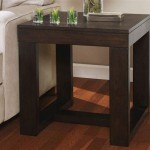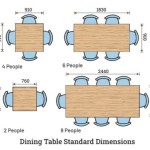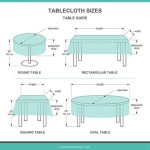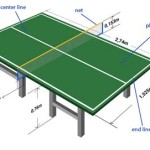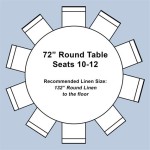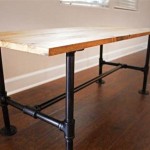The Enduring Appeal of Antique Large Dining Tables
Antique large dining tables represent more than just functional furniture; they are tangible pieces of history, embodying craftsmanship, design sensibilities, and the social traditions of bygone eras. These tables, often constructed from hardwoods like mahogany, oak, and walnut, served as central gathering places for families and communities, witnessing countless meals, conversations, and celebrations. The allure of antique large dining tables lies not only in their aesthetic appeal but also in their ability to connect us to the past and provide a unique focal point for modern homes.
The term "antique" generally refers to items that are at least 100 years old. Therefore, any large dining table considered antique today must have been crafted before the 1920s. This timeframe encompasses a diverse range of styles, from the ornate carvings of the Victorian era to the more streamlined designs of the early 20th century. The size of these tables is a defining characteristic, typically accommodating eight or more diners, reflecting a period when large families and formal dinner parties were common.
The construction and materials used in antique large dining tables are significant factors contributing to their value and longevity. Craftsmen of the past employed techniques that prioritized durability and aesthetic beauty. Dovetail joints, mortise-and-tenon joinery, and hand-carved details are hallmarks of quality antique furniture. The wood itself, often sourced from old-growth forests, possesses a density and richness that is rarely found in modern lumber. Identifying these characteristics is crucial for assessing the authenticity and overall condition of an antique dining table.
Understanding the Styles and Periods
The stylistic variations in antique large dining tables are closely linked to the prevailing design trends of their respective periods. Recognizing these styles can aid in identifying the table's origin and potential value. Several prominent styles are commonly encountered:
*Victorian (1837-1901):
Victorian dining tables are often characterized by elaborate carvings, dark finishes (typically mahogany or walnut), and a general sense of opulence. Details like cabriole legs, claw-and-ball feet, and intricate aprons are common. Extension mechanisms were also prevalent, allowing the table to be expanded for larger gatherings. Tables from this era frequently showcase highly polished surfaces, reflecting the Victorian emphasis on display and grandeur. *Edwardian (1901-1910):
Following the Victorian era, Edwardian dining tables exhibit a lighter, more refined aesthetic. While still incorporating elegant details, the designs tend to be less ornate. Lighter woods, such as satinwood and birch, were increasingly used, and the overall feel is more airy and less imposing. The emphasis shifted towards elegance and sophistication, with less focus on overt display. *Arts and Crafts (late 19th century - early 20th century):
In contrast to the Victorian and Edwardian styles, Arts and Crafts dining tables prioritize simplicity and functionality. These tables are typically crafted from oak and feature clean lines, sturdy construction, and minimal ornamentation. The focus is on showcasing the natural beauty of the wood and the quality of the craftsmanship. Mortise-and-tenon joinery is often visible, highlighting the hand-made nature of the furniture. *Early 20th Century (1900-1920s):
This period encompasses a range of styles, including those influenced by the Arts and Crafts movement and the emerging Art Deco aesthetic. Dining tables from this era may feature simpler designs with geometric patterns or subtle ornamentation. Oak remained a popular choice, but other woods like walnut and maple were also used. The tables often reflect a transition towards more modern design principles, with a focus on functionality and streamlined forms.Identifying the specific style of an antique large dining table requires careful examination of its design elements, materials, and construction techniques. Consulting with antique furniture experts or referencing reputable guides can be invaluable in making an accurate assessment.
Evaluating Condition and Authenticity
The condition of an antique large dining table significantly impacts its value and desirability. Before acquiring an antique table, a thorough inspection is essential to identify any signs of damage, wear, or previous repairs. Common issues to look for include:
*Structural Damage:
Check for loose joints, warped surfaces, or cracks in the wood. These issues can compromise the table's stability and require professional repair. Wobbling legs or a sagging tabletop are clear indicators of structural problems. *Surface Imperfections:
Scratches, dents, and water stains are common on antique furniture. While some of these imperfections can be considered part of the table's character, excessive damage can detract from its value. Carefully assess the extent of the surface wear and consider the cost of professional refinishing. *Veneer Issues:
Many antique dining tables are veneered, meaning that a thin layer of decorative wood is applied over a less expensive substrate. Look for signs of veneer lifting, chipping, or bubbling. Repairing damaged veneer can be a complex and costly process. *Evidence of Repairs:
Examine the table for signs of previous repairs, such as replaced legs, patched surfaces, or mismatched hardware. While repairs are often necessary to maintain the table's functionality, poorly executed repairs can diminish its value. Evaluate the quality of any existing repairs and consider whether further restoration is needed. *Insect Damage:
Wood-boring insects, such as termites and woodworm, can cause significant damage to antique furniture. Look for small holes or tunnels in the wood, as well as powdery residue (frass). If insect damage is present, it is essential to have the table professionally treated to prevent further deterioration.Determining the authenticity of an antique large dining table is also crucial. Look for clues that indicate the table's age and originality. Original hardware, such as drawer pulls and hinges, can be a valuable indicator. Examine the construction techniques and materials used, comparing them to those typically employed during the table's purported period. Consulting with an antique expert can provide further insights and help to verify the table's authenticity.
Restoration and Preservation Considerations
Restoring an antique large dining table is a delicate process that requires careful consideration. The goal of restoration is to preserve the table's historical integrity while addressing any structural or cosmetic issues. It is generally advisable to seek the services of a professional furniture restorer who has experience working with antique pieces.
Several key principles should guide the restoration process:
*Minimal Intervention:
Strive to preserve as much of the original finish and construction as possible. Avoid unnecessary alterations that could compromise the table's authenticity. *Authentic Materials:
Use materials that are historically accurate and compatible with the original construction. When replacing parts, such as hardware or veneer, source materials that are similar in appearance and quality to the originals. *Reversible Techniques:
Employ restoration techniques that are reversible, allowing for future adjustments or refinements. Avoid using harsh chemicals or abrasive methods that could damage the wood or finish. *Professional Expertise:
Entrust the restoration to a qualified professional who has the necessary skills and knowledge to handle antique furniture. A skilled restorer can assess the table's condition, develop a tailored restoration plan, and execute the work with care and precision.Beyond restoration, proper preservation is essential to maintain the longevity of an antique large dining table. Protect the table from excessive humidity, direct sunlight, and extreme temperature fluctuations. Use coasters and placemats to prevent water stains and heat damage. Clean the table regularly with a soft cloth and a gentle furniture polish. Avoid using abrasive cleaners or harsh chemicals that could damage the finish. By taking these precautions, you can help to ensure that your antique dining table remains a treasured heirloom for generations to come.
The acquisition of an antique large dining table is an investment in history, craftsmanship, and enduring style. By understanding the various styles, evaluating the condition and authenticity, and considering the principles of restoration and preservation, individuals can make informed decisions and acquire a piece of furniture that will provide years of enjoyment and appreciation.

Large Victorian Dining Table Extending Mahogany Tables 14 Ft 427 Cm

Large 6 Metre Antique Table 20ft Vintage Regency Mahogany Boardroom Dining

Large Antique Mahogany Extending Dining Table 19th Century For At Pamono

Large Antique Edwardian Dining Table Extending To 12ft Long

Large Antique Dining Table 4110 In Gothic Style

1850s Large 8 Seat Antique Victorian Mahogany Dining Table Chairish

Antique Mahogany Dining Table Wide D End Extending Large Antiques Georgian Furniture Regency Victorian

Very Large Antique Oak Extending Dining Table Pd010a441 Antiques Atlas

50 Off Antique Carved Oak Extending Dining Table Large

Large 3m Chestnut Antique Table Dining Farmhouse Sold Gallery

